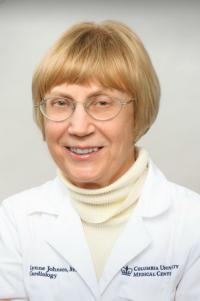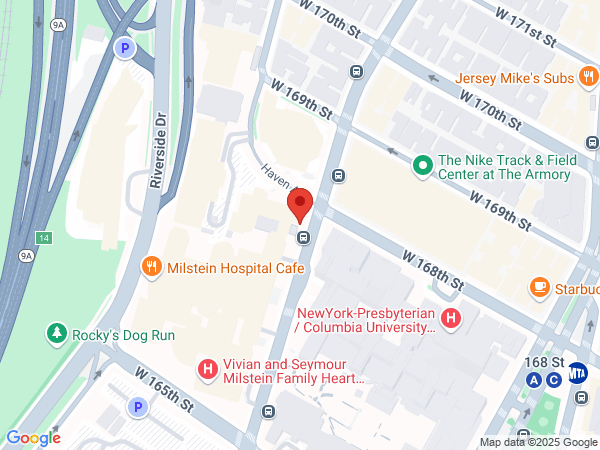
Overview
I began my academic career following cardiology fellowship as junior faculty at Columbia University Medical Center where I helped start the Nuclear Cardiology laboratory which was one of the first laboratories to perform perfusion imaging and gated blood pool scintigraphy in NYC. I remained at CU for 18 years doing clinical research, involved in phase II and phase III trials of perfusion imaging agents such as sestamibi as well as early radiolabeled antibody clinical trials targeting myocardial necrosis in patients with acute MI. I also helped develop radiotracers using relevant animal models of ischemic heart disease, atherosclerosis, and cardiac transplantation. I left CU to go to University of Alabama at Birmingham as Director of Nuclear Cardiology and stayed for 2 years where I also did some work with the cardiac MRI program. From UAB I moved to Brown University/Rhode Island Hospital as Director of Nuclear Cardiology where I stayed for 10 years having the opportunity to also direct their preclinical imaging laboratory. In 2005 I returned to a faculty position at CU.
I have had a long interest to develop and apply novel imaging probes targeting sites in vasculature and myocardium that are important in clinical disease. I have performed preclinical experimental studies imaging myocardial tissue hypoxia, apoptosis, angiogenesis and RAGE expression. I have had a particular interest in imaging the vulnerable atherosclerotic plaque using radionuclide labeled probes in mouse and pig models of atherosclerosis, investigating uptake of tracers targeting apoptosis, metalloproteinase activation, expression of Receptor for Advanced Glycated Endproducts (RAGE), and selective VEGF receptor expression. With institutional support from the Department of Medicine and Division of Cardiology I set up a preclinical molecular imaging core laboratory that offers micro-CT, micro-SPECT/CT, and optical imaging resources for investigators with animals outside the barrier at Columbia University Health Sciences. I have had continuous NIH funding for about 20 years. I am currently PI (or co-PI) on two R01s: to using imaging to detect therapeutic effect of a novel antibody blocking RAGE to improve hind limb blood flow in a diabetic pig model of PAD, and in collaboration with the laboratory of Dr. Jeanine D'Armiento, to perform a phase II clinical trial of 99mTc rhAnnexin-128 (Advanced Accelerator Applications, France) to image lung apoptosis in patients with COPD under an individual IND (L Johnson). I have published over 100 papers.
Areas of Expertise / Conditions Treated
- Adult Cardiology
Academic Appointments
- Professor of Medicine at CUMC
Hospital Affiliations
- NewYork-Presbyterian / Columbia University Irving Medical Center
Gender
- Female
Schedule an Appointment
Phone Appointments
Connect Patient Portal
For existing patients, login to make an appointment, view documentation or contact your care provider.
Location(s)
Credentials & Experience
Education & Training
- Columbia University College of Physicians and Surgeons
- Internship: Harlem Hospital Center
- Residency: University of California-San Diego Medical Center
- Fellowship: NewYork-Presbyterian Hospital/Columbia University Medical Center
Committees, Societies, Councils
FACC
FAHA
Society of Nuclear Medicine and Molecular Imaging
Board Certifications
- Internal Medicine
- Cardiovascular Disease
Honors & Awards
Founding member of ASNC
Member of first committee of Women in Cardiology of the Clinical Council of the AHA
Past president of CV Council of SNM
Served on NIH study sections both as regular member and Ad Hoc for over 15 years
Research
Research interest is to develop and apply molecular imaging probes that target biological pathways important in myocardial, vascular, and pulmonary diseases. The ultimate purpose of these efforts is to develop tools to estimate the location and extent of activated pathways in live subjects that can potentially provide diagnostic information, and provide biomarkers to follow therapeutic responses.
I have had a long interest to develop and apply novel imaging probes targeting sites in vasculature and myocardium that are important in clinical disease. I have performed preclinical experimental studies imaging myocardial tissue hypoxia, apoptosis, angiogenesis and RAGE expression. I have had a particular interest in imaging the vulnerable atherosclerotic plaque using radionuclide labeled probes in mouse and pig models of atherosclerosis, investigating uptake of tracers targeting apoptosis, metalloproteinase activation, expression of Receptor for Advanced Glycated Endproducts (RAGE), and selective VEGF receptor expression. With institutional support from the Department of Medicine and Division of Cardiology I set up a preclinical molecular imaging core laboratory that offers micro-CT, micro-SPECT/CT, and optical imaging resources for investigators with animals outside the barrier at Columbia University Health Sciences. I have had continuous NIH funding for about 20 years.
Selected Publications
Clinical papers
Johnson LL, Verdesca SA, Aude WY, Xavier RC, Nott LT, Campanella MW, Germano G. Postischemic stunning can affect left ventricular ejection fraction and regional wall motion on post-stress gated sestamibi tomograms. J Am Coll Cardiol. 1997;30(7):1641-8.
Johnson LL, Schofield L, Mastrofrancesco P, Donahay T, Nott L. Technetium-99m-nitroimadazole uptake in a swine model of demand ischemia. J Nucl Med. 1998;39(8):1468-75.
Johnson LL, Schofield L, Mastrofrancesco P, Donahay T, Farb A, Khaw BA. Technetium-99m glucarate uptake in a swine model of limited flow plus increased demand. Journal of nuclear cardiology : official publication of the American Society of Nuclear Cardiology. 2000;7(6):590-8.
Gibson PB, Demus D, Noto R, Hudson W, Johnson LL. Low event rate for stress-only perfusion imaging in patients evaluated for chest pain. J Am Coll Cardiol. 2002;39(6):999-1004.
Nuclear tracers targeting myocardial infarction, myocardial hibernation, and reperfusion injury:
Johnson LL, Schofield L, Donahay T, Mastrofrancesco P. Myocardial uptake of a (99m)Tc-nitroheterocycle in a swine model of occlusion and reperfusion. J Nucl Med. 2000;41(7):1237-43.
Johnson LL, Schofield L, Donahay T, Bouchard M, Poppas A, Haubner R. Radiolabeled arginine-glycine-aspartic acid peptides to image angiogenesis in swine model of hibernating myocardium. JACC Cardiovascular imaging. 2008;1(4):500-10. PMCID: PMC2636715.
Tekabe Y, Luma J, Li Q, Schmidt AM, Ramasamy R, Johnson LL. Imaging of receptors for advanced glycation end products in experimental myocardial ischemia and reperfusion injury. JACC Cardiovascular imaging. 2012;5(1):59-67. PMCID: PMC3636550.
Godier-Furnemont AF, Tekabe Y, Kollaros M, Eng G, Morales A, Vunjak-Novakovic G, Johnson LL. Noninvasive imaging of myocyte apoptosis following application of a stem cell-engineered delivery platform to acutely infarcted myocardium. J Nucl Med. 2013;54(6):977-83.
Vascular disease.
Johnson LL, Schofield LM, Verdesca SA, Sharaf BL, Jones RM, Virmani R, Khaw BA. In vivo uptake of radiolabeled antibody to proliferating smooth muscle cells in a swine model of coronary stent restenosis. J Nucl Med. 2000;41(9):1535-40.
Johnson LL, Schofield LM, Weber DK, Kolodgie F, Virmani R, Khaw BA. Uptake of 111In-Z2D3 on SPECT imaging in a swine model of coronary stent restenosis correlated with cell proliferation. J Nucl Med. 2004;45(2):294-9.
Johnson LL, Schofield L, Donahay T, Narula N, Narula J. 99mTc-annexin V imaging for in vivo detection of atherosclerotic lesions in porcine coronary arteries. J Nucl Med. 2005;46(7):1186-93.
Tekabe Y, Kollaros M, Zerihoun A, Zhang G, Backer MV, Backer JM, Johnson LL. Imaging VEGF receptor expression to identify accelerated atherosclerosis. EJNMMI Research 2014:4:41. PMCID: pending.
Anti-RAGE antibody as imaging agent
Tekabe Y, Li Q, Rosario R, Sedlar M, Majewski S, Hudson BI, Einstein AJ, Schmidt AM, Johnson LL. Development of receptor for advanced glycation end products-directed imaging of atherosclerotic plaque in a murine model of spontaneous atherosclerosis. Circulation Cardiovascular imaging. 2008;1(3):212-9.
Tekabe Y, Luma J, Einstein AJ, Sedlar M, Li Q, Schmidt AM, Johnson LL. A novel monoclonal antibody for RAGE-directed imaging identifies accelerated atherosclerosis in diabetes. J Nucl Med. 2010;51(1):92-7.
Tekabe Y, Kollaros M, Li Q, Zhang G, Li C, Schmidt AM, Johnson LL. Beneficial Effect of Glucose Control on Atherosclerosis Progression in Diabetic ApoE(-/-) Mice: Shown by Rage Directed Imaging. International journal of molecular imaging. 2014;2014:695391. PMCID: PMC4009322.
Johnson LL, Tekabe Y, Kollaros M, Eng G, Bhatia K, Li C, Krueger CG, Shanmuganayagam D, Schmidt AM. Imaging RAGE expression in atherosclerotic plaques in hyperlipidemic pigs. EJNMMI research. 2014;4:26. PMCID: PMC4078320.
Anti-RAGE Ab as treatment to block RAGE expression
Tekabe Y, Shen X, Luma J, Weisenberger D, Yan SF, Haubner R, Schmidt AM, Johnson L. Imaging the effect of receptor for advanced glycation endproducts on angiogenic response to hindlimb ischemia in diabetes. EJNMMI research. 2011;1(1):3. PMCID: PMC3192466.
Tekabe Y, Kollaros M, Li C, Zhang G, Schmidt AM, Johnson L. Imaging receptor for advanced glycation end product expression in mouse model of hind limb ischemia. EJNMMI research. 2013;3(1):37. PMCID: PMC3662588.
Tekabe Y, Anthony T, Li Q, Ray R, Rai V, Zhang G, Schmidt AM, Johnson LL. Treatment effect with anti-RAGE F(ab')2 antibody improves hind limb angiogenesis and blood flow in Type 1 diabetic mice with left femoral artery ligation. Vasc Med. 2015;20(3):212-8.
